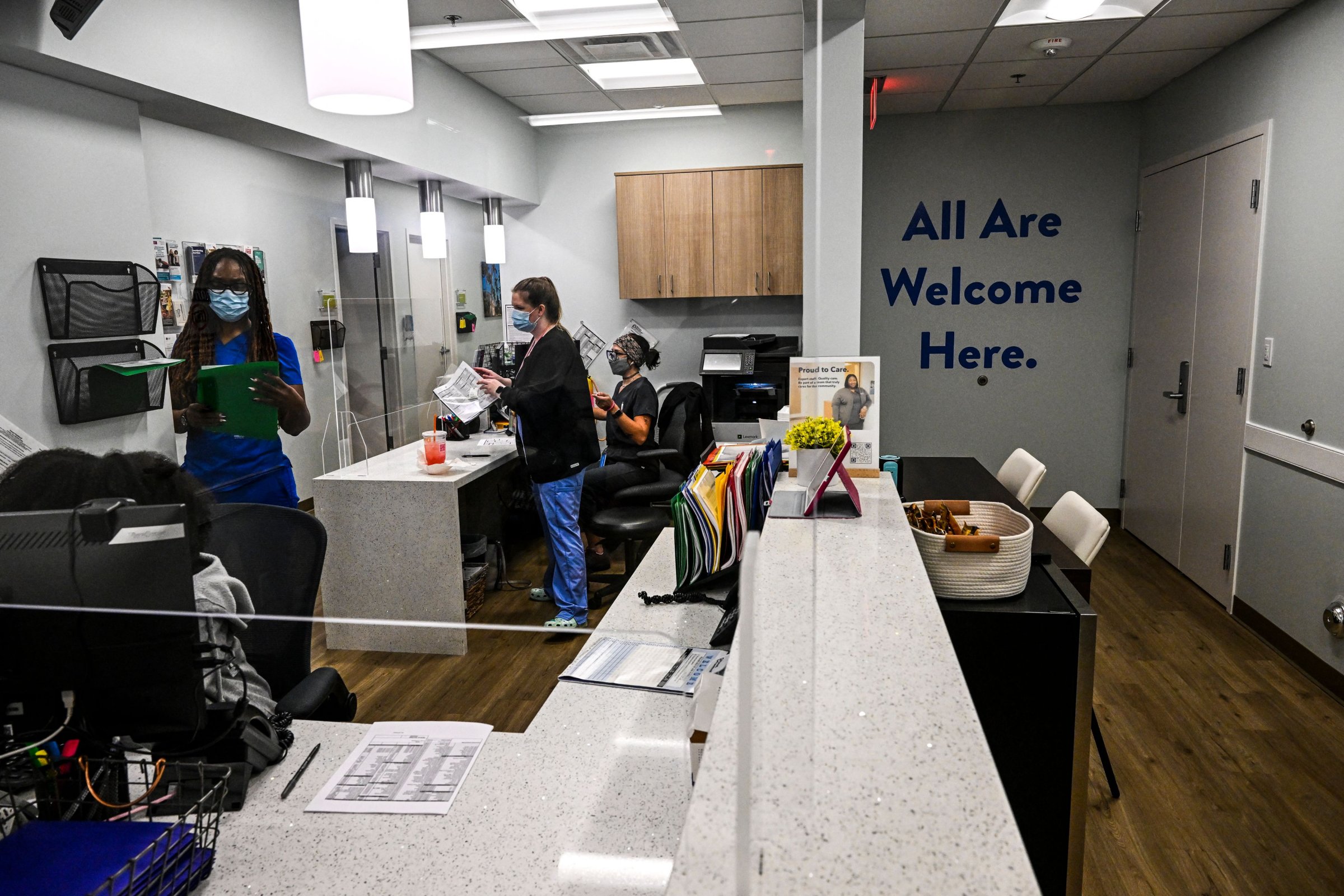
In a move that could reshape access to abortions for pregnant people in Florida and the surrounding region, Gov. Ron DeSantis recently signed a ban on abortions after just six weeks of pregnancy. Although the state is still awaiting a verdict from the Florida Supreme Court on whether a 15-week ban signed into law last July can continue to be upheld, this even stricter bill is now waiting in the wings to replace it.
That move would be a sharp right turn for the state. Until recently, Florida has, for the most part, been an easier place to receive abortion care than most states that surround it. Before the 15-week ban passed in July 2022, Floridians could get abortions until 24 weeks of pregnancy (though they were—and still are—subject to a number of barriers to care, including a mandatory 24-hour waiting period enacted one year ago). Following the repeal of Roe v. Wade, Florida saw the largest 6-month increase in legal abortions for any state. People who had to travel across state lines for care likely accounted for about 5% of those abortions; the nearby states Georgia and South Carolina effectively have six-week bans, while Alabama and Mississippi both ban abortion outright.
A six-week ban would more closely align Florida with its neighbors and effectively ban most abortions in the state, says Dr. Shelly Tien, a maternal fetal medicine physician who provides abortion care at Planned Parenthood clinics across Florida. Many people aren’t even aware they’re pregnant by six weeks; a two-week delay in a menstrual cycle is fairly normal and could happen for a “multitude of health reasons,” says Tien. “These bans make it impossible as health-care providers to provide the care that we were trained to provide to our communities.”
Read More: Abortion Rights Benefit People Who Want Kids, Too
If and when the six-week ban takes effect, people who might otherwise have sought care in Florida will end up having to travel many states away to get an abortion. The resulting influx of patients could further strain already overburdened care systems in those states. Florida is “one of the few remaining options for women who are already desperate not to be pregnant and already traveling really far,” says Tien. But not, it appears, for long.
Florida’s new six-week ban will erode access even further by allocating $25 million from the state toward funding anti-abortion crisis pregnancy centers, which are known to offer misinformation aimed at dissuading those seeking abortion from going through with it. Funding these types of facilities can make some vulnerable people less inclined to get proper care at legitimate clinics, says Tien. “These centers may not be providing scientific, evidence-based information for patients, which is our primary responsibility as health-care providers.”
The bill allows exceptions for rape, incest, medical emergencies, and fatal fetal abnormalities at varying cutoff points, but these aren’t easily categorized in practice. “There are many complex and nuanced health situations that arise that don’t fit these narrow exceptions,” says Tien. “As physicians and health-care providers, it is our primary pressing professional and ethical duty that we are proactive in offering interventions before patients get too sick.” Because of this, she says, “we see health-care providers placed in a difficult position,” afraid that the counseling and interventions upheld by the best medical standards won’t be respected in a court of law.
Because of this, practitioners say, strict bans such as Florida’s often end up contradicting politicians’ stated intentions to protect and provide for expectant and new mothers. “If we truly wanted to shift the focus to supporting patients and their families, then we should be providing services for prenatal care, expanding Medicaid and insurance coverage for pregnant women who don’t have that care, supporting education and teaching for nurses and health care providers, and supporting birthing hospitals so that they can keep their labor and deliveries in their NICUs open,” says Tien.
More Must-Reads from TIME
- Why Biden Dropped Out
- Ukraine’s Plan to Survive Trump
- The Rise of a New Kind of Parenting Guru
- The Chaos and Commotion of the RNC in Photos
- Why We All Have a Stake in Twisters’ Success
- 8 Eating Habits That Actually Improve Your Sleep
- Welcome to the Noah Lyles Olympics
- Get Our Paris Olympics Newsletter in Your Inbox
Contact us at letters@time.com